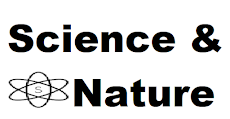In a cosmological shocker that rattled the roots of contemporary cosmology, the James Webb Space Telescope (JWST) has observed a giant structure in the early universe—one that, based on existing models, should not even exist. Scientists are now facing a shocking question: Is the concept of the universe's birth fundamentally defective?
A Discovery That Defies Time
The galaxy cluster in question is a gigantic, dense, mature, and seemingly well-crafted one seen at a time when the universe had only 500 million years. Galaxies and clusters, on the Big Bang theory, take billions of years to develop. It seems this one jumped the queue.
“The thing just shouldn’t exist,” said one astrophysicist reacting to the finding. “It’s like finding a fully grown adult in a maternity ward.”
The JWST, launched in 2021 and now peering deeper into space and time than any instrument before it, has repeatedly stunned scientists with glimpses of mature, dusty galaxies forming much earlier than theory allows. But this latest discovery—if confirmed—could be the most disruptive yet.
Challenging the Big Bang Paradigm
The Big Bang paradigm suggests that the universe started some 13.8 billion years ago from a point of infinite density, and over time has expanded and cooled. In the initial moments, matter was so hot and disorganized that it could not form anything. Galaxies would take hundreds of millions of years to condense slowly from clouds of primordial gas.
The JWST, however, is painting a different picture.
This new formation, called a "cosmic anomaly," is so large and mature that it challenges how rapidly matter was able to coalesce following the Big Bang. Standard models can't readily explain such rapid formation without resorting to exotic physics, altered dark matter behavior, or—more radically—a completely new model.
So. Is the Big Bang a Lie?
Let's be precise: the Big Bang theory has decades of observational evidence—from cosmic microwave background radiation to galaxy distribution. Science lives on challenge. "A lie" is too harsh, perhaps, but the term conveys the shock that many experience in the aftermath of JWST's revelations.
This does not necessarily indicate that the Big Bang did not occur. What it does indicate is that our narrative regarding how it happened could require significant overhauling. Perhaps cosmic expansion functioned differently. Possibly unrecognized forces molded matter more rapidly than we imagined. Or possibly we're witnessing the imprints of completely novel physics.
The Exciting Road Ahead
One of the best things about science is that it's always unfinished. The James Webb Space Telescope is opening a new window into the universe—one where surprises are starting to become the norm.
The revelation of a structure that shouldn't be there
isn't the end of the Big Bang theory, but potentially the start of its next
iteration.
It's a humble reminder that the universe still holds secrets beyond our understanding—and that each answer may give rise to more profound, deeper questions.
Is the Big Bang a lie, then?
Not exactly.
But with the JWST, the universe is now much more fascinating.



.png)
%20(1)%20(2).jpg)
0 Comments